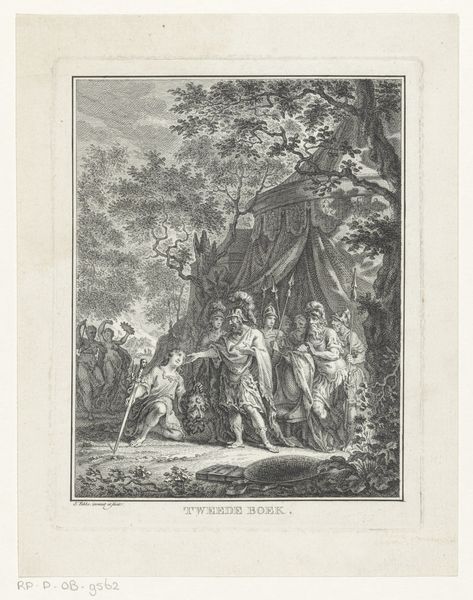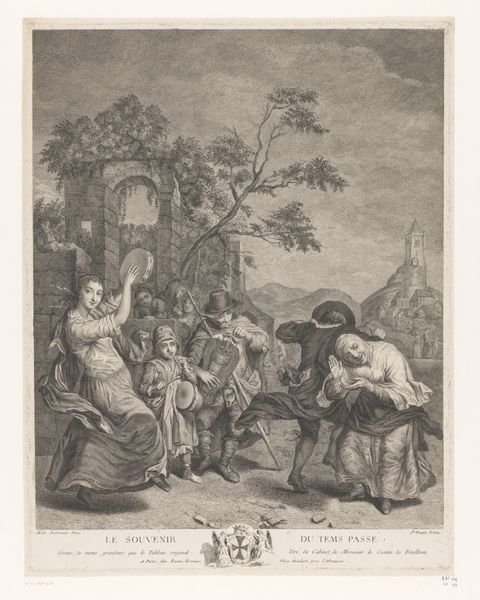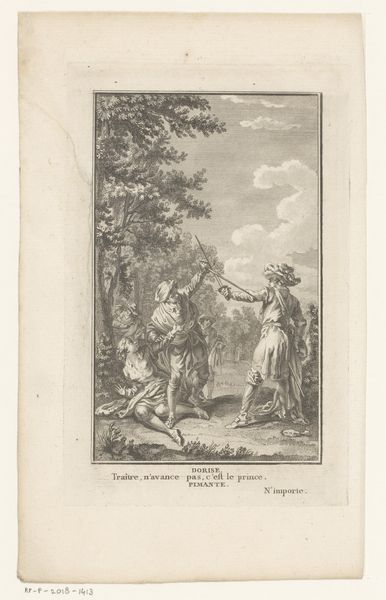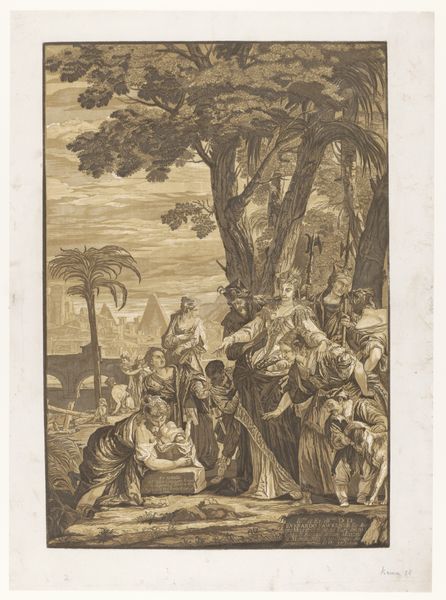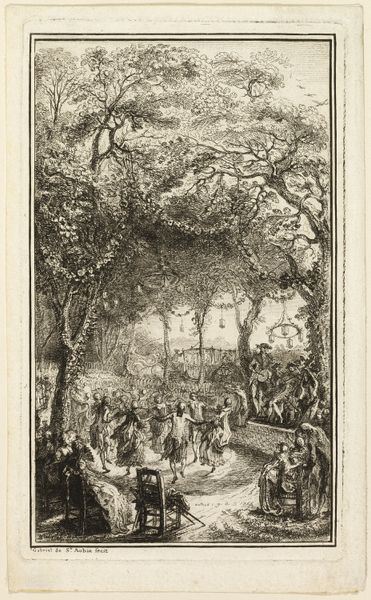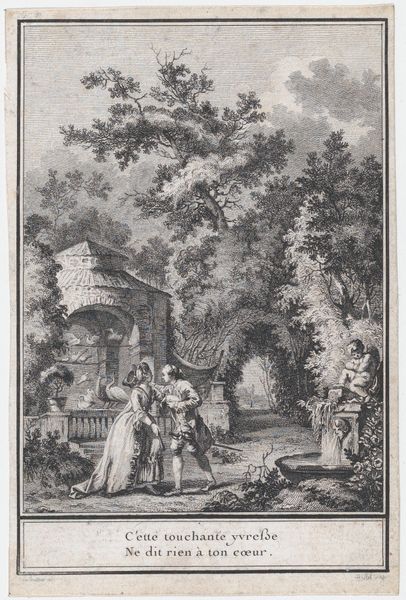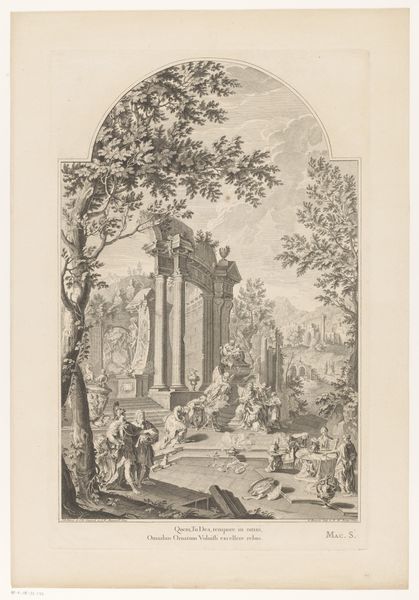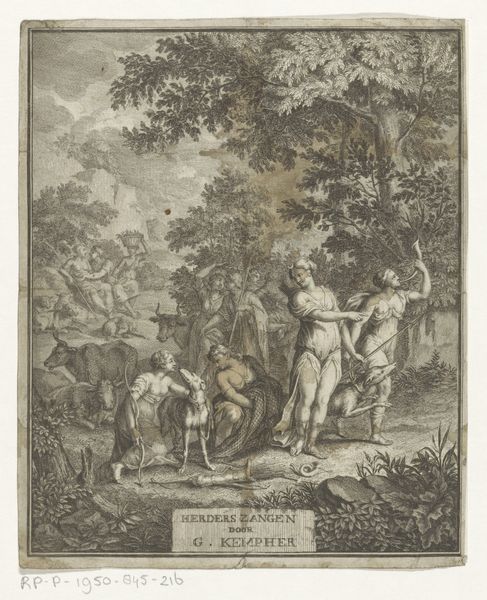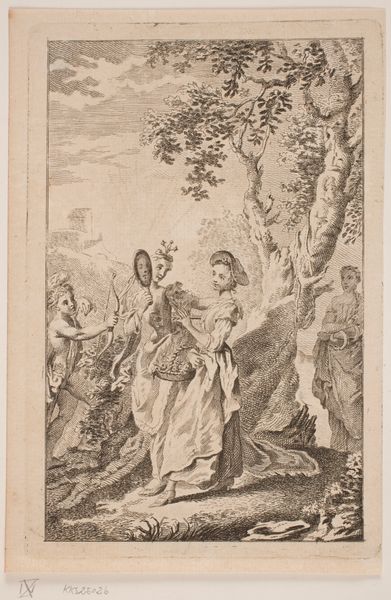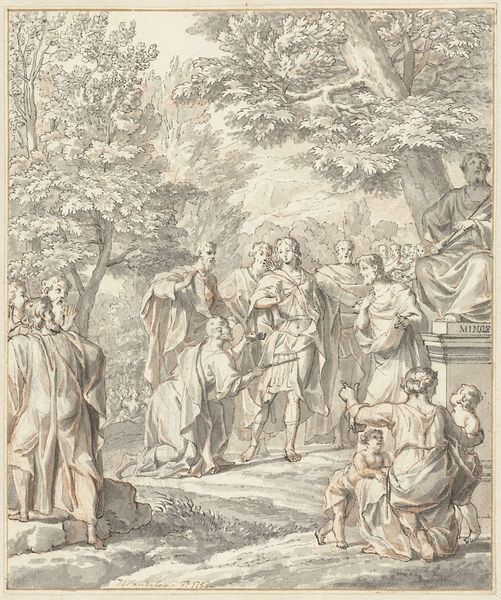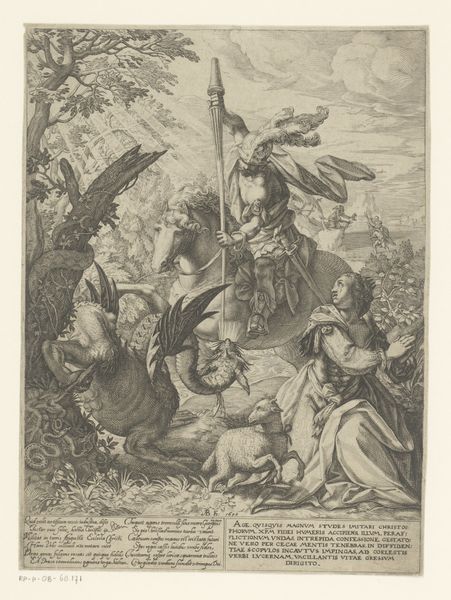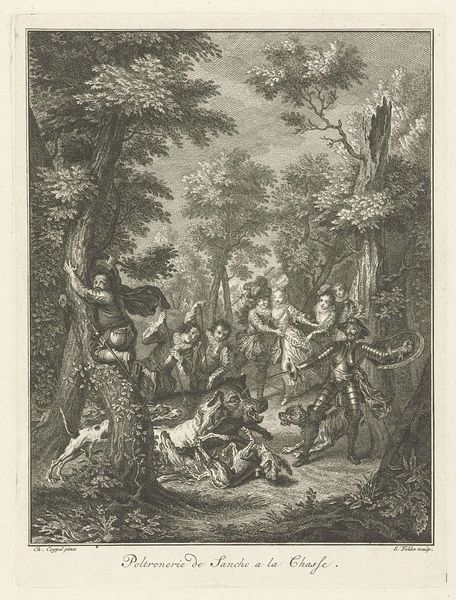
Dimensions: height 190 mm, width 146 mm
Copyright: Rijks Museum: Open Domain
Curator: Simon Fokke’s 1766 engraving, "David gevangen door soldaten van koning Saul," currently residing at the Rijksmuseum, really captures a pivotal scene from the biblical story. The Dutch Golden Age rendering casts the landscape as more than just a backdrop, influencing our understanding of the story’s themes. Editor: My first impression is a sense of orchestrated chaos. The contrast between light and shadow seems to deliberately obfuscate the details, leaving us questioning who to empathize with amid such a flurry of action. Curator: Precisely. Fokke’s skill in engraving brings forth the deep-seated rivalry between Saul and David, doesn't it? If we look at Saul's soldiers surrounding David, we see a visual representation of fear overpowering reason; fear of losing power leads them to persecute the perceived threat of David. It seems more about Saul's anxieties projected onto David. Editor: I couldn’t agree more. It really encapsulates a timeless story of political insecurity. However, I also notice how Fokke uses classical motifs - almost Greco-Roman architecture - to frame this Old Testament narrative, suggesting perhaps, an allegorical link between biblical power struggles and contemporary 18th-century social or political dynamics? This gives it layers of meaning relevant to its own time, beyond a simple retelling. Curator: Absolutely! The landscape’s intricate rendering holds cultural weight too. The trees, architecture, and even the clothing serve as visual cues to contextualize the period and the setting, allowing for a bridge between the historical narrative and the symbolic meanings projected onto it. Editor: And the sheer detail of the engraving—it gives us space to contemplate David's predicament as not merely a heroic moment but as a reflection on themes like leadership, betrayal, and justice, echoed throughout history across different social and political spheres. Curator: Indeed. I think Simon Fokke intended it this way: the artwork provides a timeless parable about the nature of power and its corruption, even across centuries. It's about psychological depth within these cultural emblems. Editor: Ultimately, seeing this work in the context of 18th-century anxieties about governance, while informed by ancient symbolism, pushes us to recognize similar themes across various cultures and epochs—highlighting art’s power as a continuous conversation, wouldn’t you agree?
Comments
No comments
Be the first to comment and join the conversation on the ultimate creative platform.
